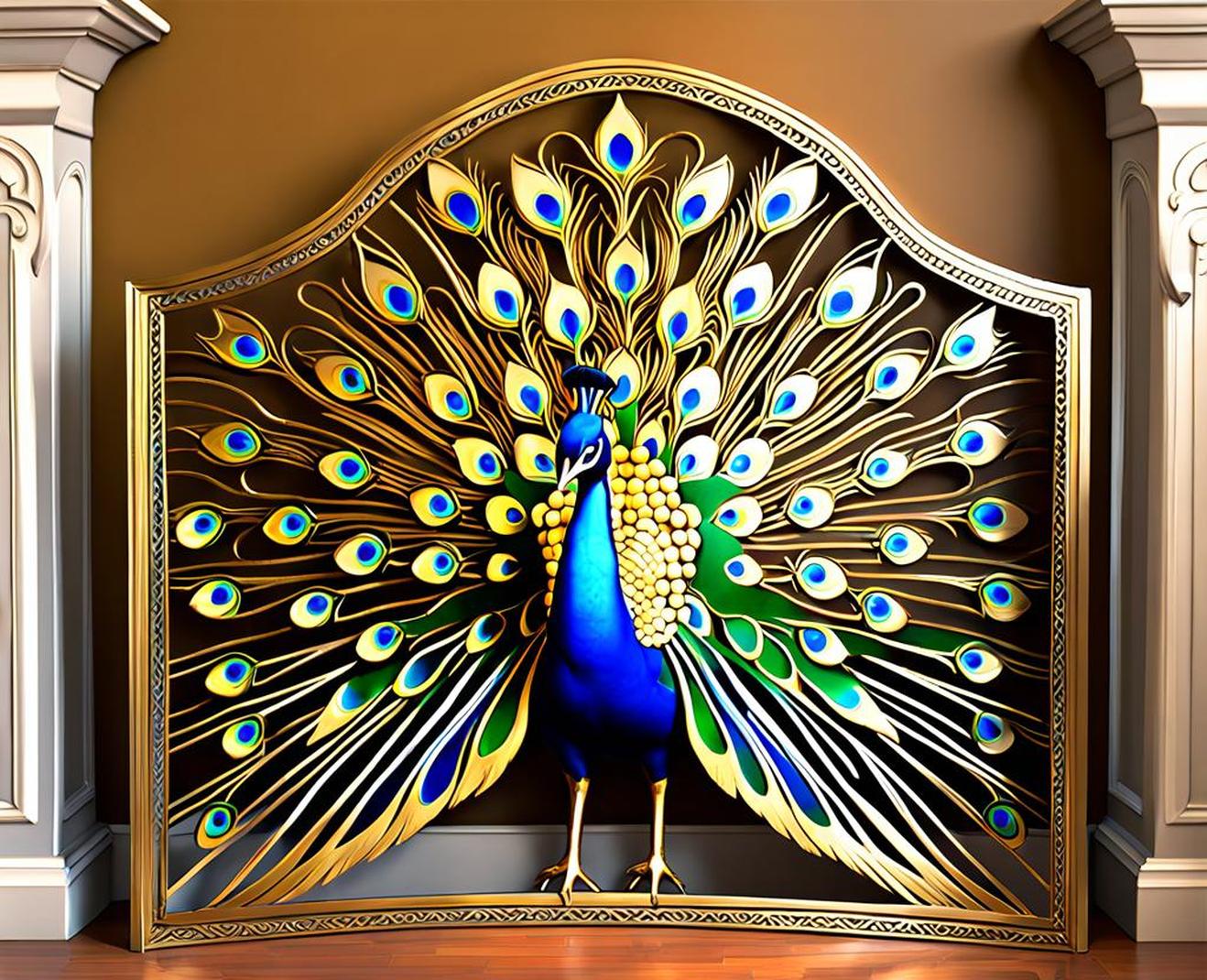Antique brass peacock fireplace screens embody the essence of Victorian-era decorative arts. With their intricate metalwork designs and striking peacock imagery, these functional objects blend artistry, symbolism, and utility in one exquisite piece. As decorative accessories that graced parlors and sitting rooms, they offer a window into the sophisticated tastes of the 19th century.
We’ll uncover the painstaking craftsmanship required to produce such metalwork masterpieces. And we’ll appreciate how these screens merged form and function, acting as both beautiful works of art and practical home safeguards.
The Rise of Peacock Motifs in the Victorian Era
To understand antique fire screens, we must first set the stage of the Victorian era that shaped them. Lasting from 1837 to 1901, this period in Britain and America was characterized by prosperity, innovation, and increasingly opulent tastes in home decor. New manufacturing processes allowed more elaborate furnishings and architectural details than ever before.
In this era of luxury, peacock feathers and images gained immense popularity as a decorative motif. With their vivid coloring and intricate patterns, peacocks aligned perfectly with the Victorian aesthetic. Their feathers and forms appeared throughout the decorative arts, adorning everything from textiles to ceramics.
Cultural Significance of the Peacock
But peacocks were more than just a pretty embellishment. They held symbolic meaning rooted in ancient civilizations. In Christianity, the peacock represented renewal and resurrection. And in ancient Greek and Roman myth, the peacock was associated with immortality and eternal life.

This symbolism resonated with the Victorian aristocracy, who used the motif as a status symbol. The peacock’s lavish plumage evoked luxury, while its Christian meanings of revival spoke to Victorian morals. In an era of progress but rigid propriety, the peacock neatly aligned decadence and virtue.
Intricate Metalworking Techniques
The artistry of antique peacock fire screens lies not just in their design, but in their meticulous craftsmanship. Skilled metalworkers produced the screens using specialized trades perfected over centuries.
Brass and bronze offered durable, malleable metals to construct sturdy fire screen foundations. But it was the elaborate decorative techniques that made them remarkable. Filigree, embossing, piercing, casting, and champleve infused artistry into the metalwork. This required tremendous expertise from specialized artisans.
Artisanal Craftsmanship
The creation of each fireplace screen was an artistic process from start to finish. Metal artisans often trained for years as apprentices before mastering their intricate craft. Workshops buzzed with the meticulous labor that each screen demanded.
First, the screens’ foundational form had to be forged and molded. Then painstaking filigree work twisted and soldered together tiny metal pieces to produce delicate, lacelike effects. Artisans added further ornamentation by embossing designs and piercing patterns into the metal.
With each screen customized, no two were exactly alike. The level of skill and time invested made each piece truly singular – an artistic object to admire.
Practical Purpose as Barrier Screens
As lovely as the peacock screens were, they also had an important practical purpose: protecting the home. Installed in front of fireplaces, their metal mesh screens acted as shields from errant sparks and embers.
Sitting rooms and parlors were common locations for fire screens, as families would gather near the warmth of the hearth. Without a protective screen, loose embers could singe clothes, furnishings, or exposed skin.
Safeguarding Health in the Home
The inherent fire risks of open hearths made fireplace screens a safeguard. They protected families from burns and injuries near the flickering flames. Strategically placed screens also reduced the chance of uncontrolled sparks igniting destructive house fires.
In an era before electricity and central heating, fire hazards lurked in many Victorian homes. Ornate fire screens added style to parlors, while also discreetly promoting health through fire prevention. Form and function worked in tandem for both aesthetic appeal and household safety.
Collectible Antiques and Decorative Arts
Today, surviving antique fireplace screens offer a glimpse of Victorian artistry and sensibility. With their detailed metalwork and symbolic imagery, they endure as admired antiques and collectibles.
Fine examples with intact peacock designs can fetch prices in the thousands at antique dealers and auctions. Collectors and interior designers prize the screens as decorative accent pieces. The ornate craftsmanship and cultural heritage imbue them with artistic value.
Preserving the Legacy
Conservation efforts help maintain those screens still in existence today. Museums may undertake restoration projects to repair damage and stabilize delicate materials. Documentation and archiving make artistic records available.
Some artisans still practice traditional metalworking techniques passed down through generations. Although arduous and time consuming, these methods keep intricate trades alive. Each handcrafted screen connects us to the dazzling artistry of the past.
Antique peacock fireplace screens reflect the layered sophistication of the Victorian era. With roots in ancient symbolism, they merged luxury, virtue, and ingenuity in a singular decorative furnishing.
Today, the artistry and heritage of these functional metalworks is inspiring renewed interest and appreciation. As both beautiful objets d’art and featsof home safeguarding, peacock fire screens remain an endlessly captivating emblem of 19th century design.
Tracing their history reveals reverence for the extraordinary metalcraft and vision behind them. Each delicate filigree and bronze peacock transports us to the extraordinary vision of the Victorian age.
